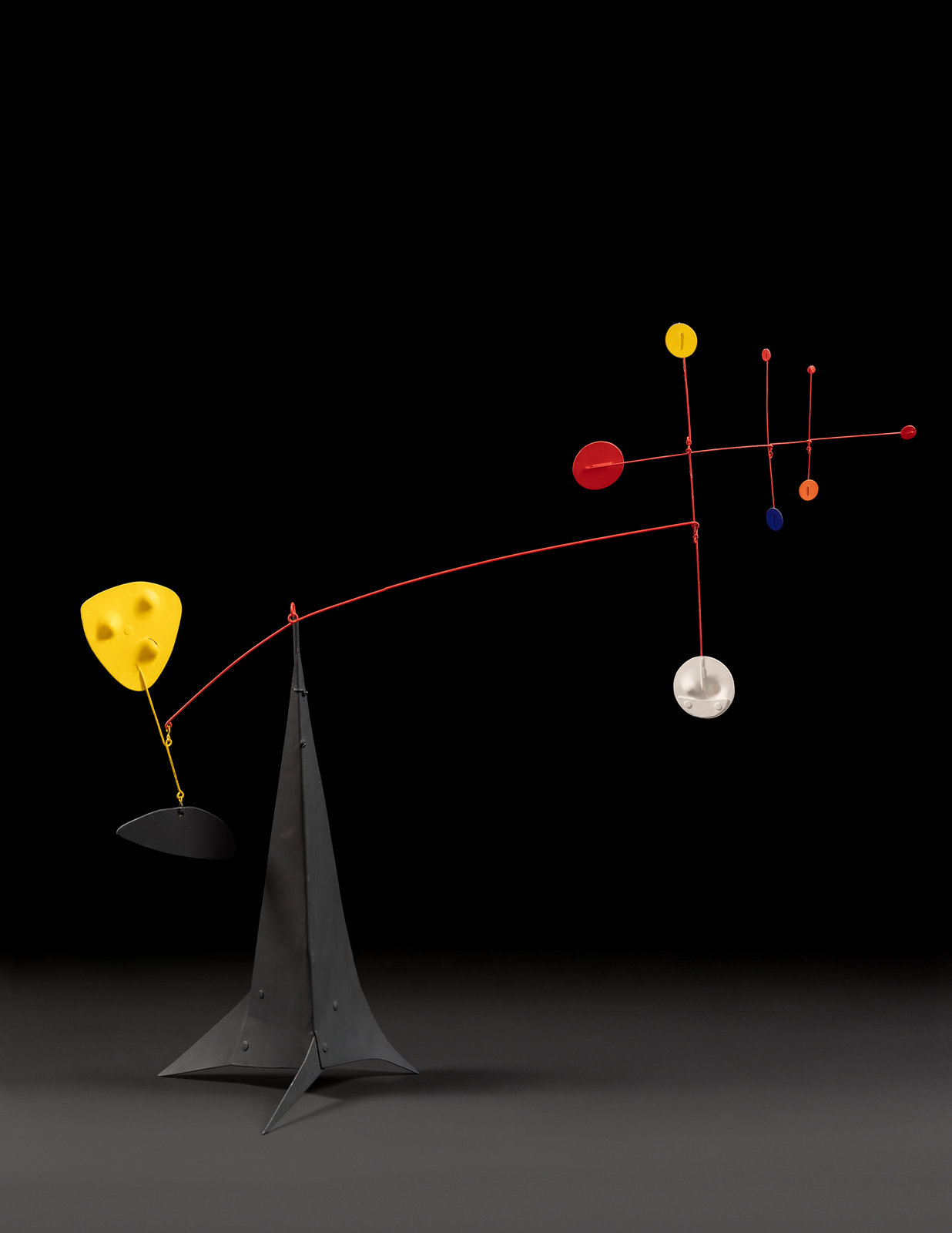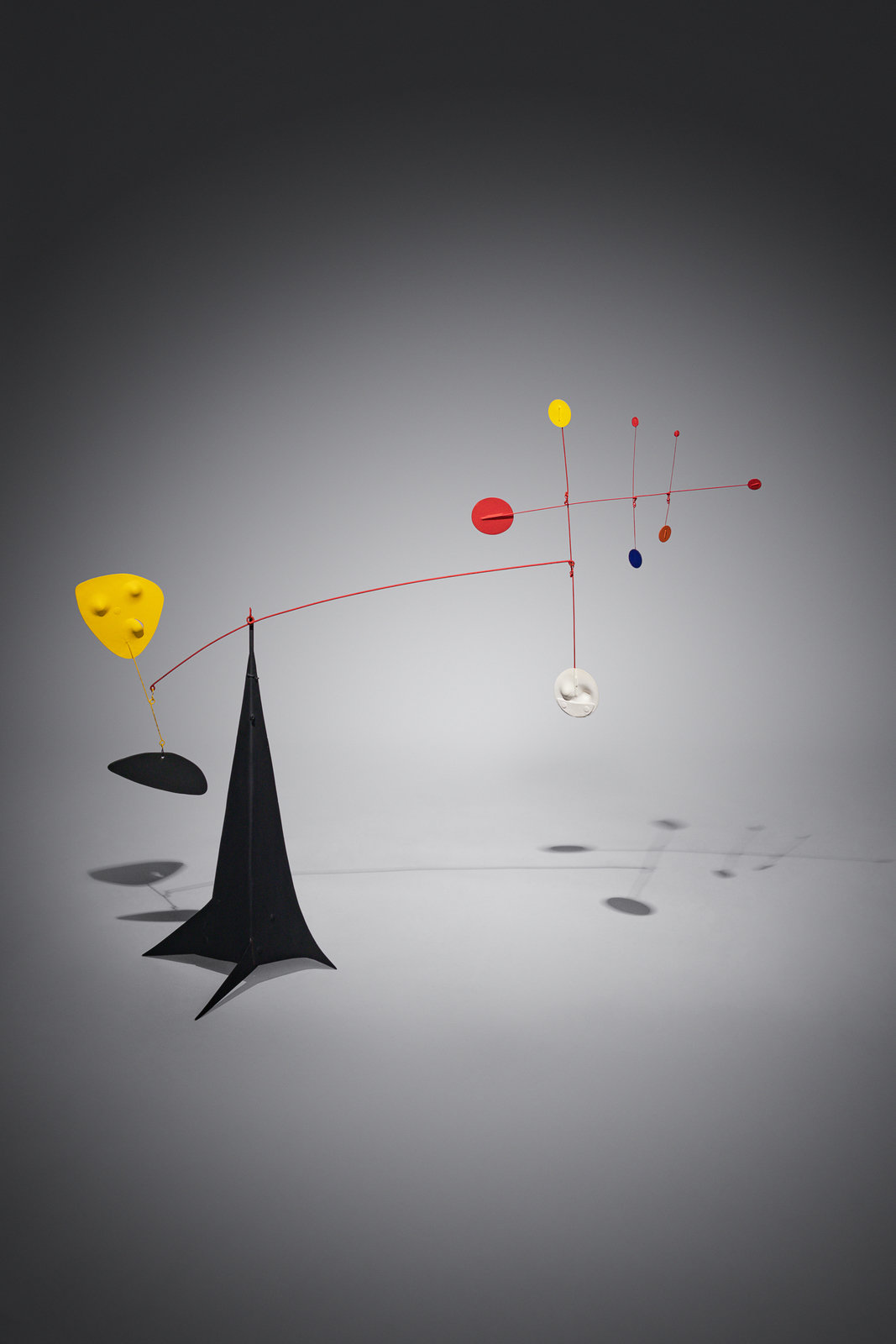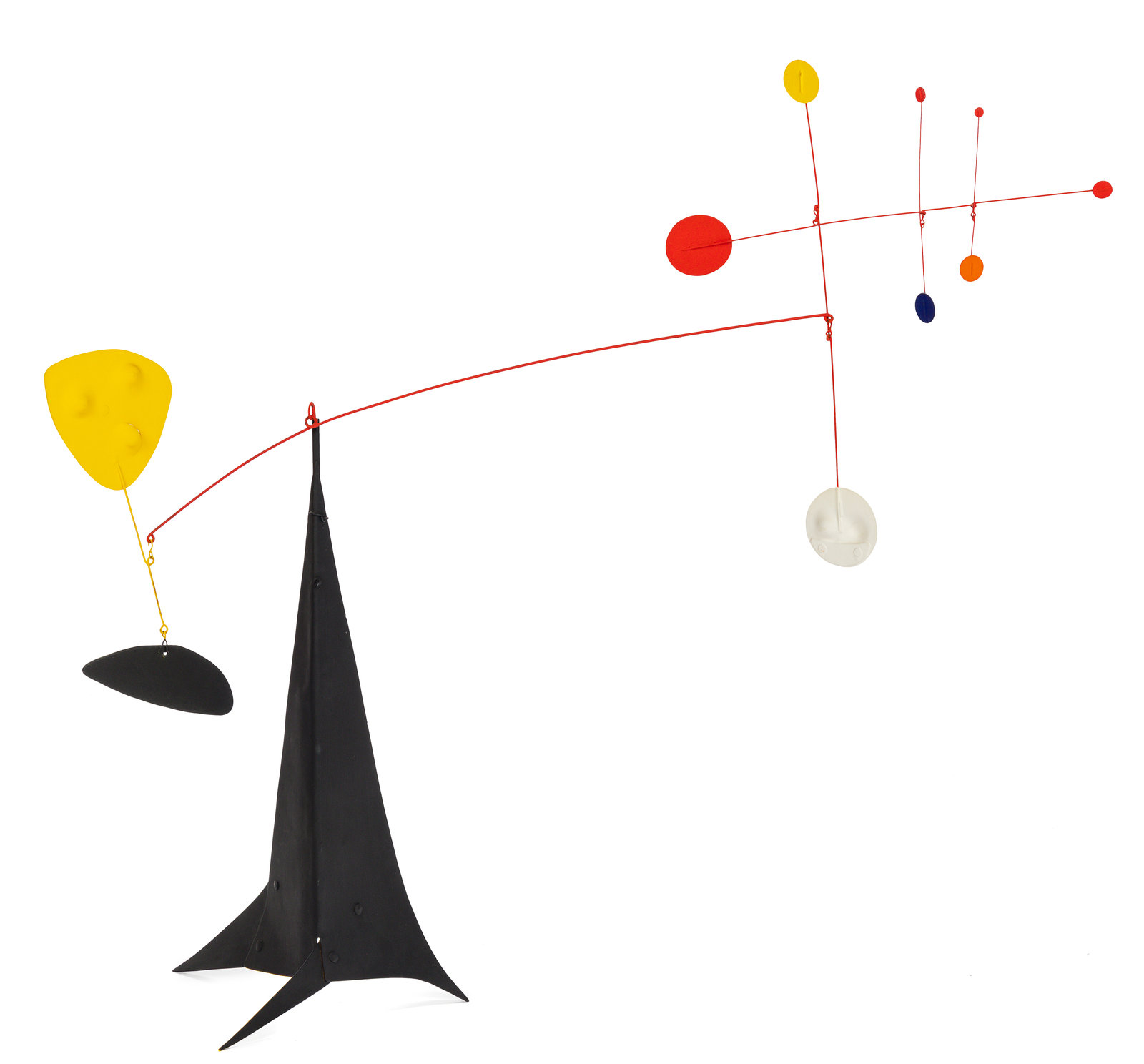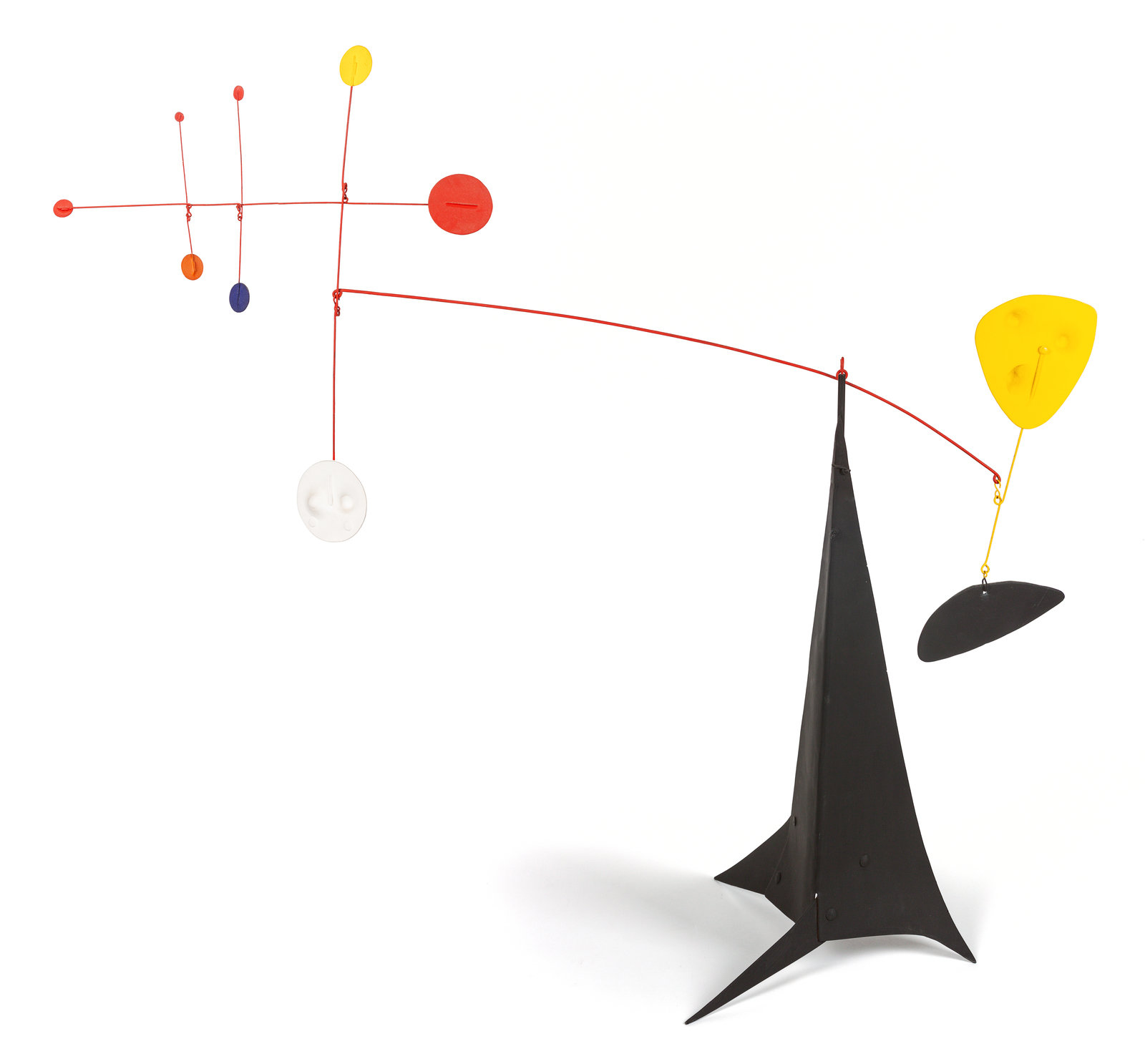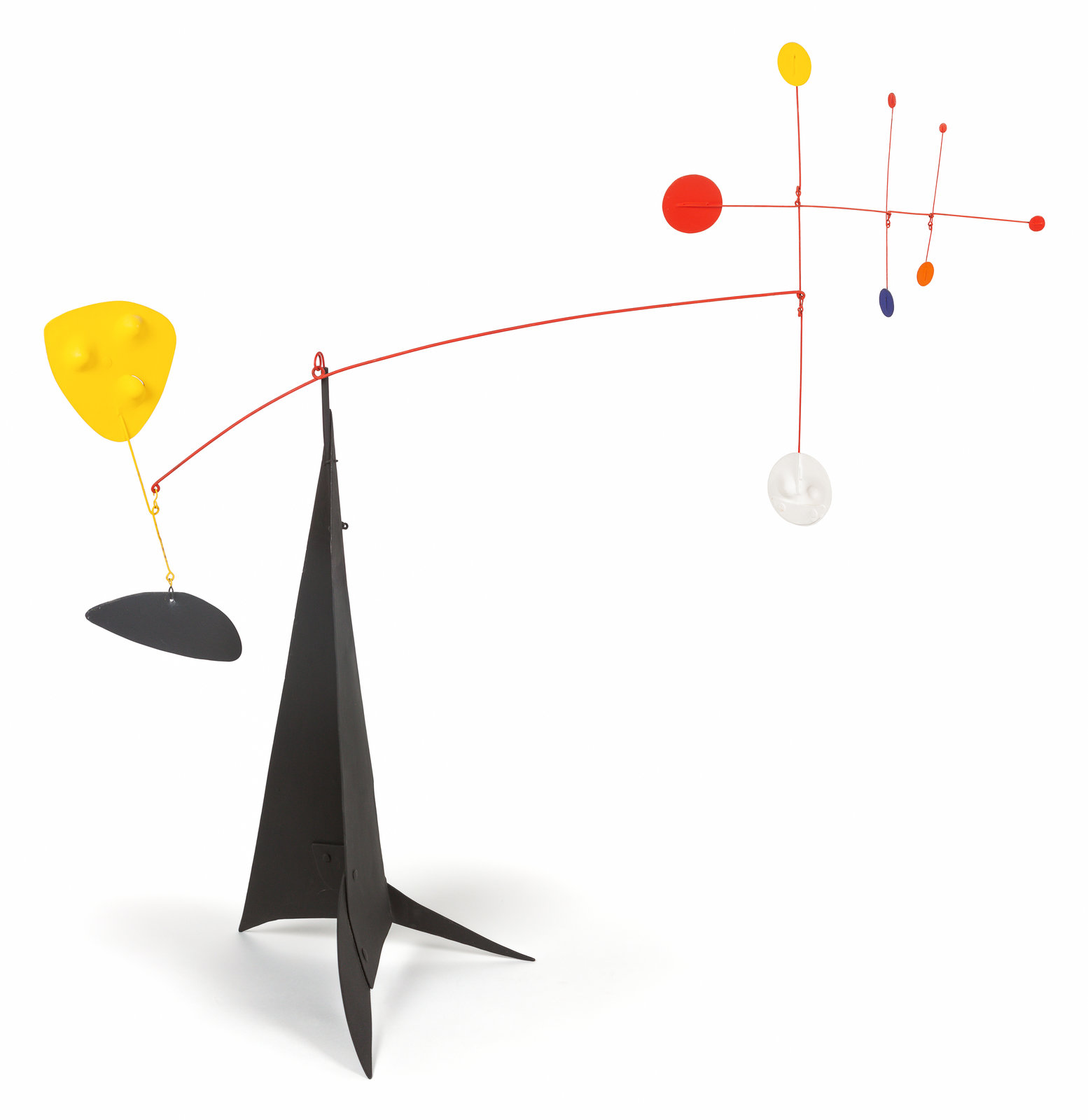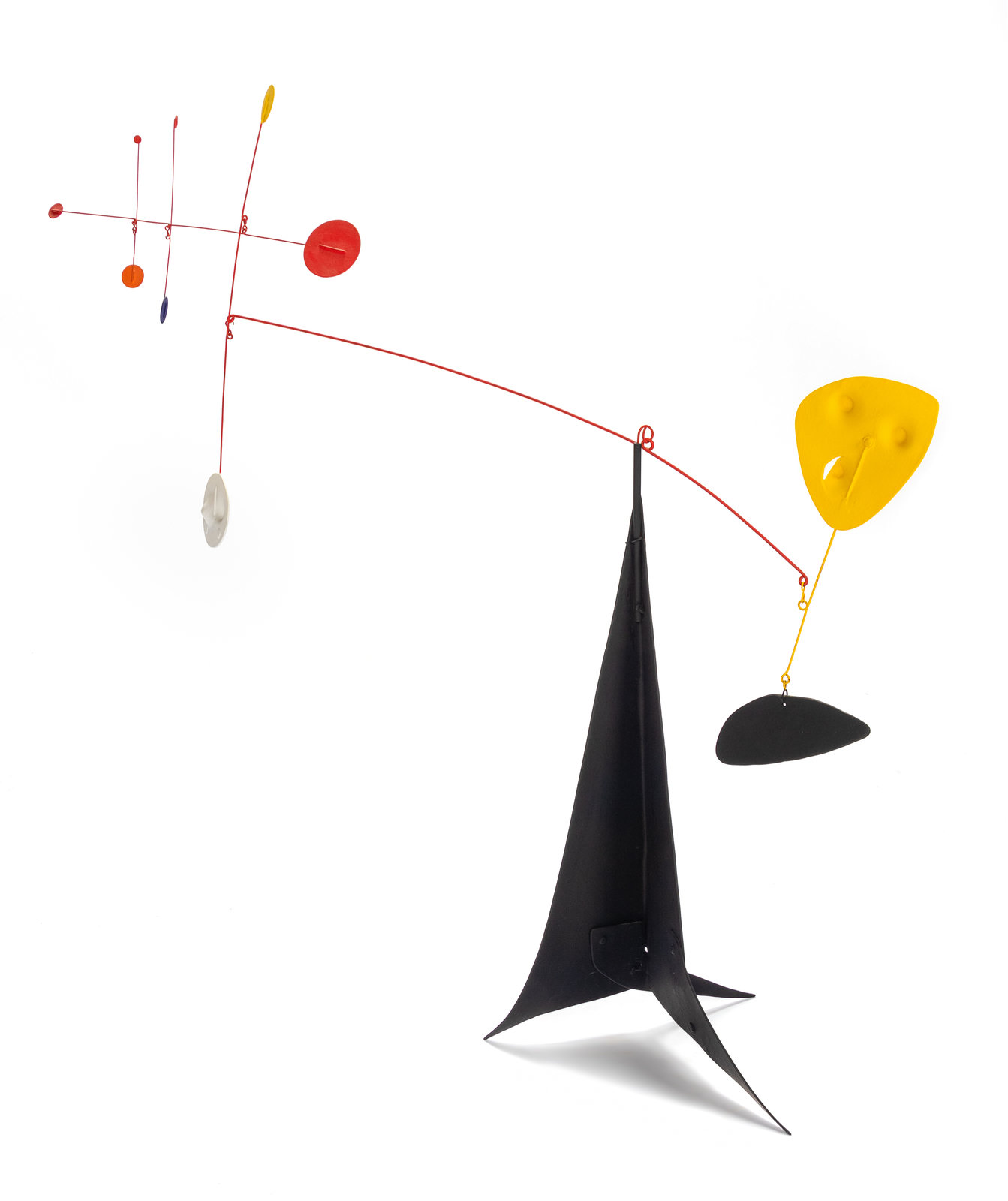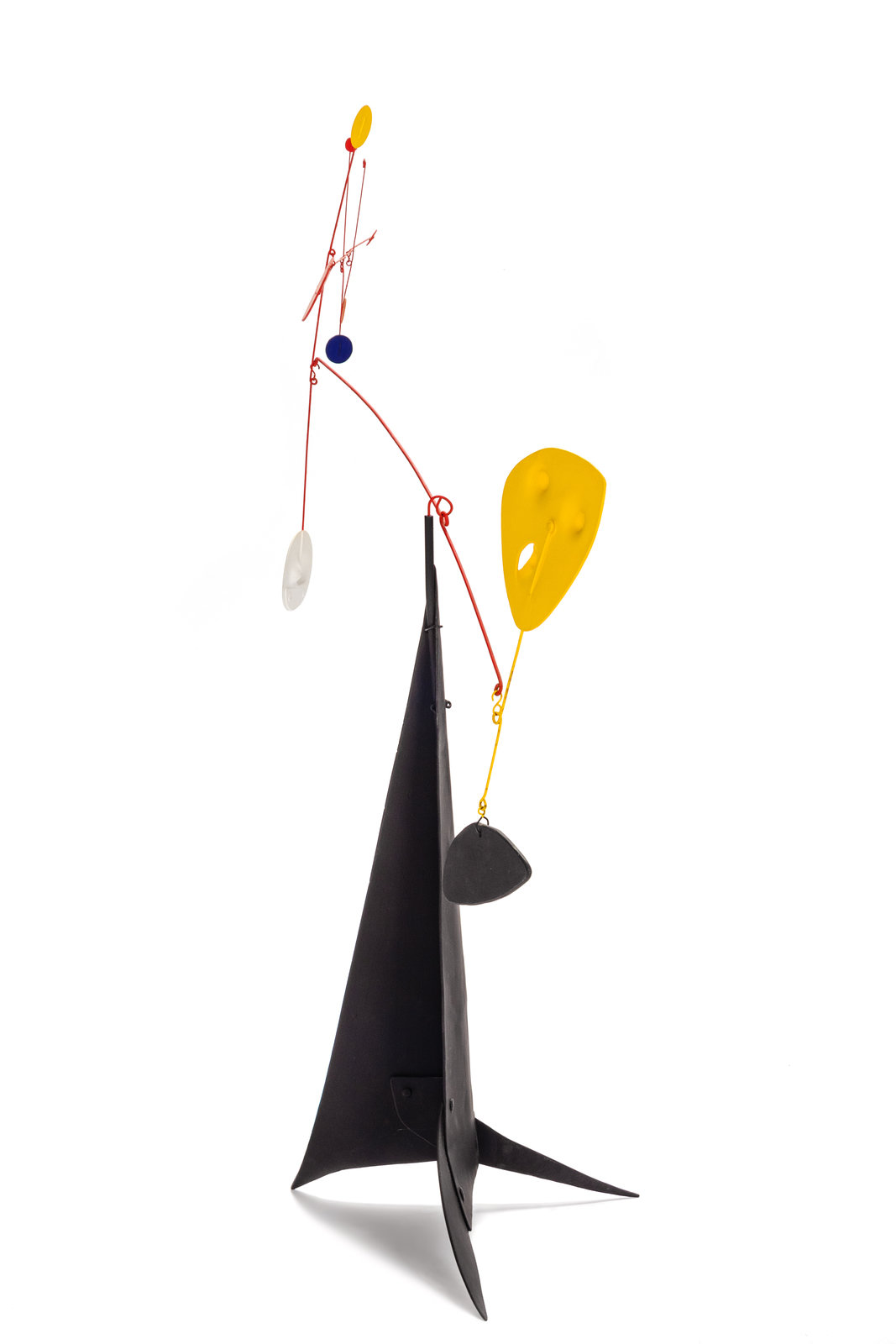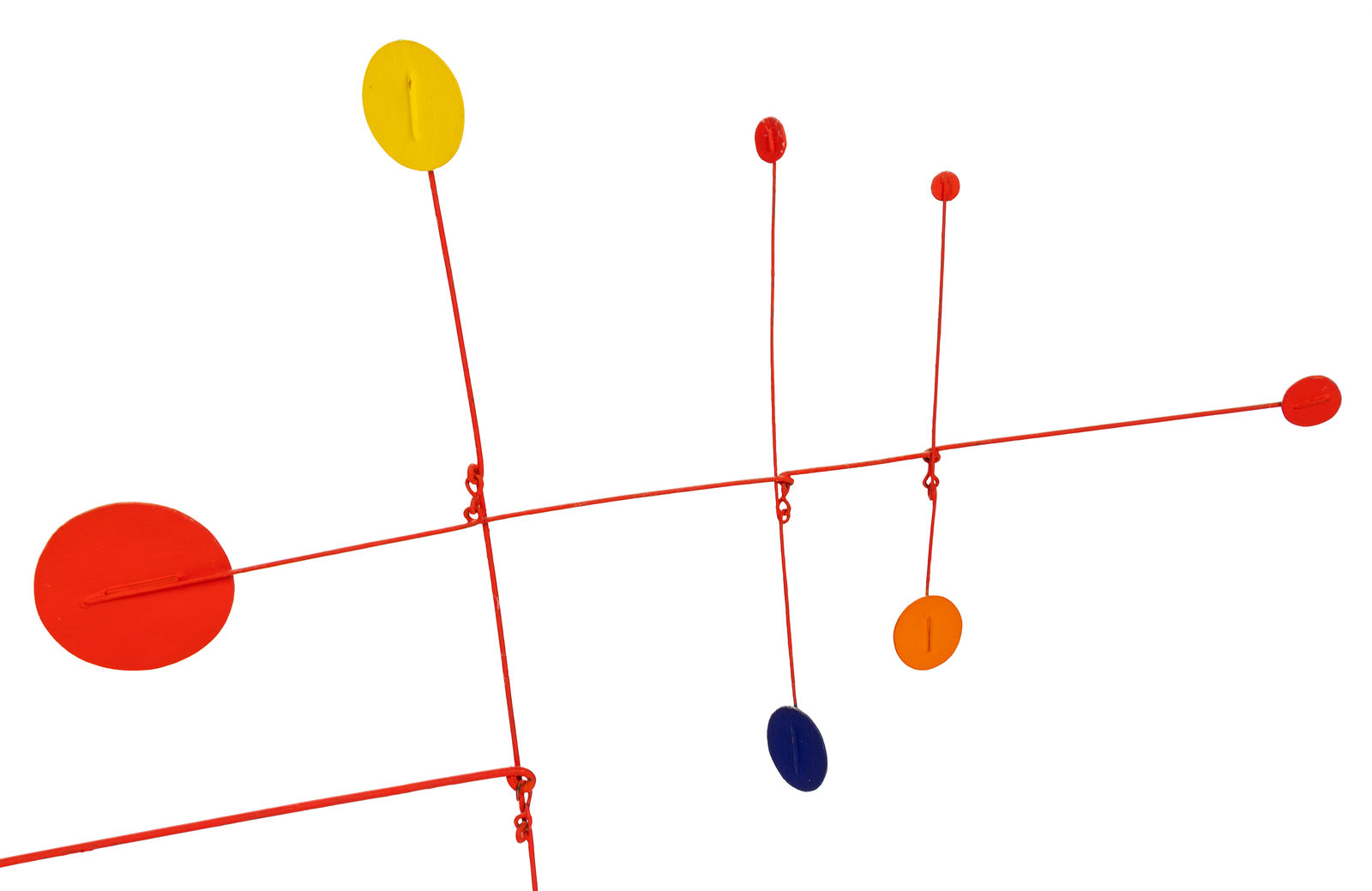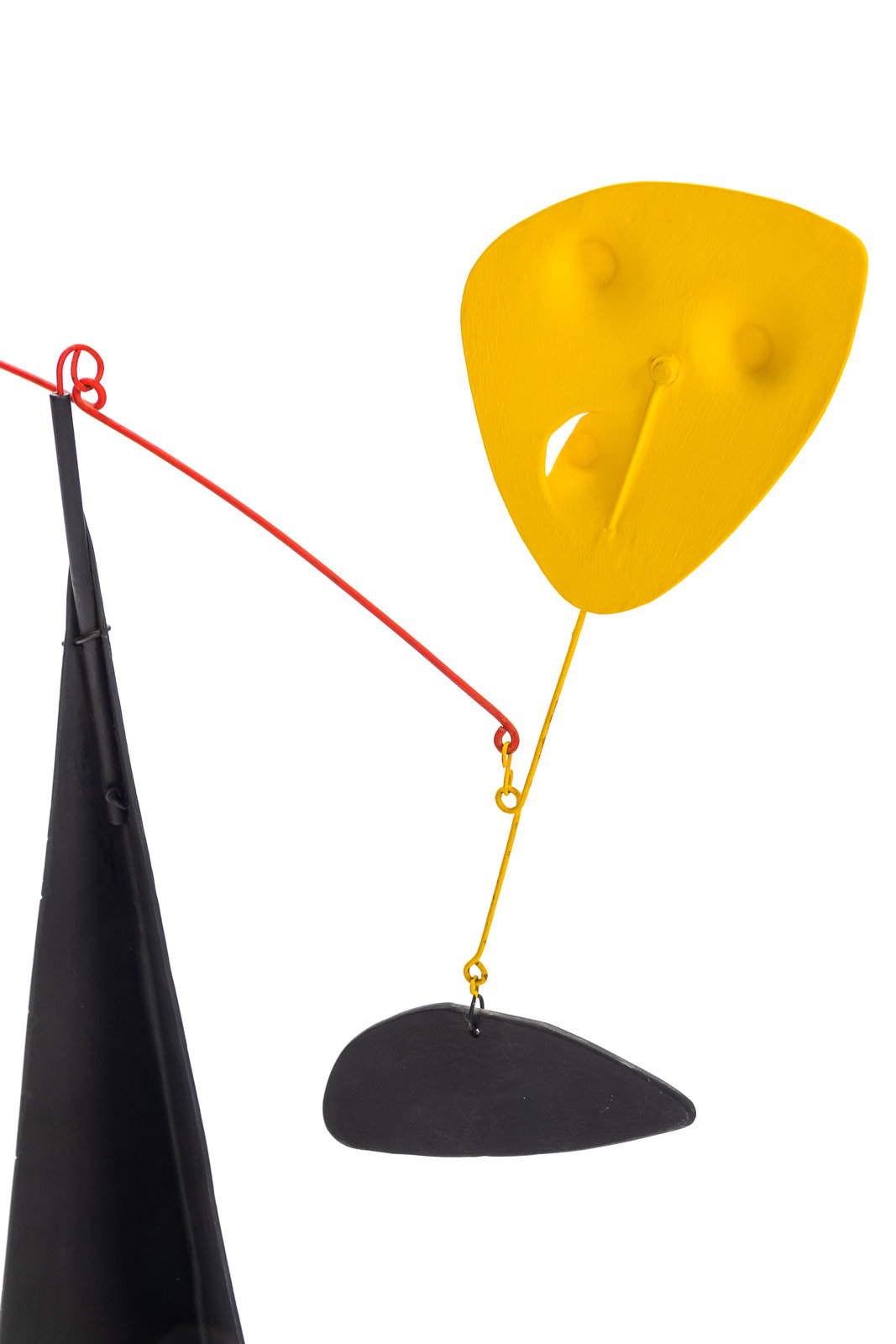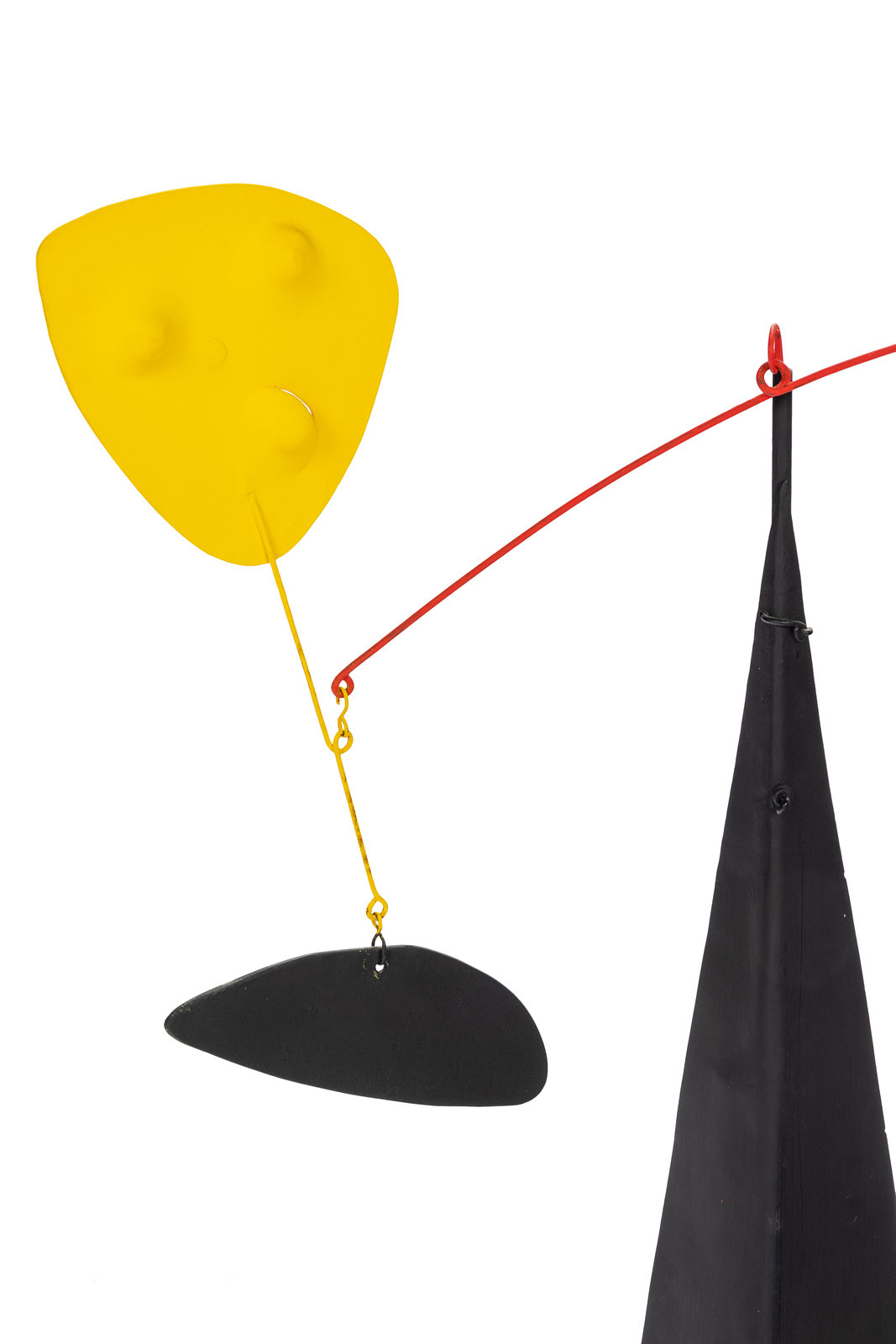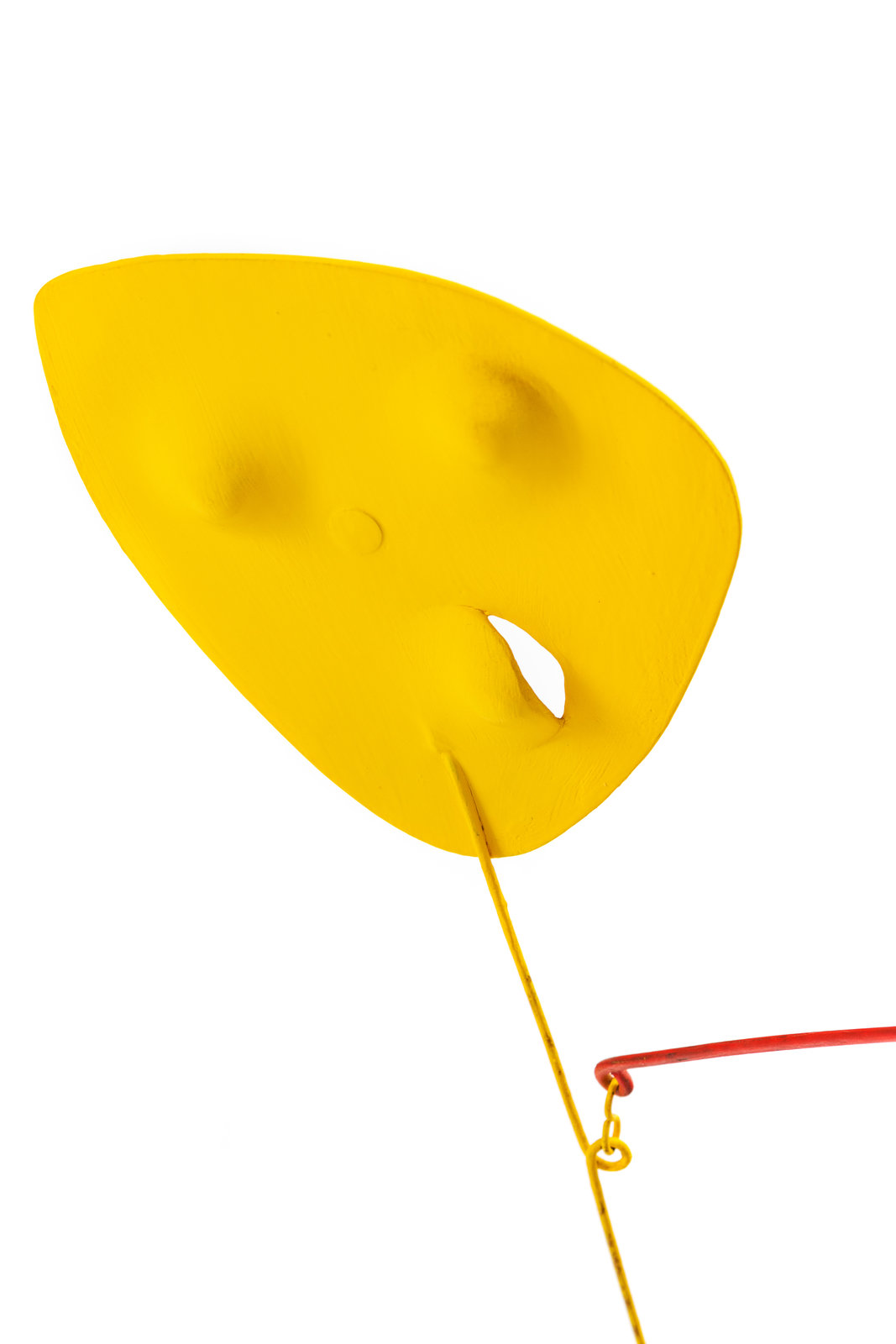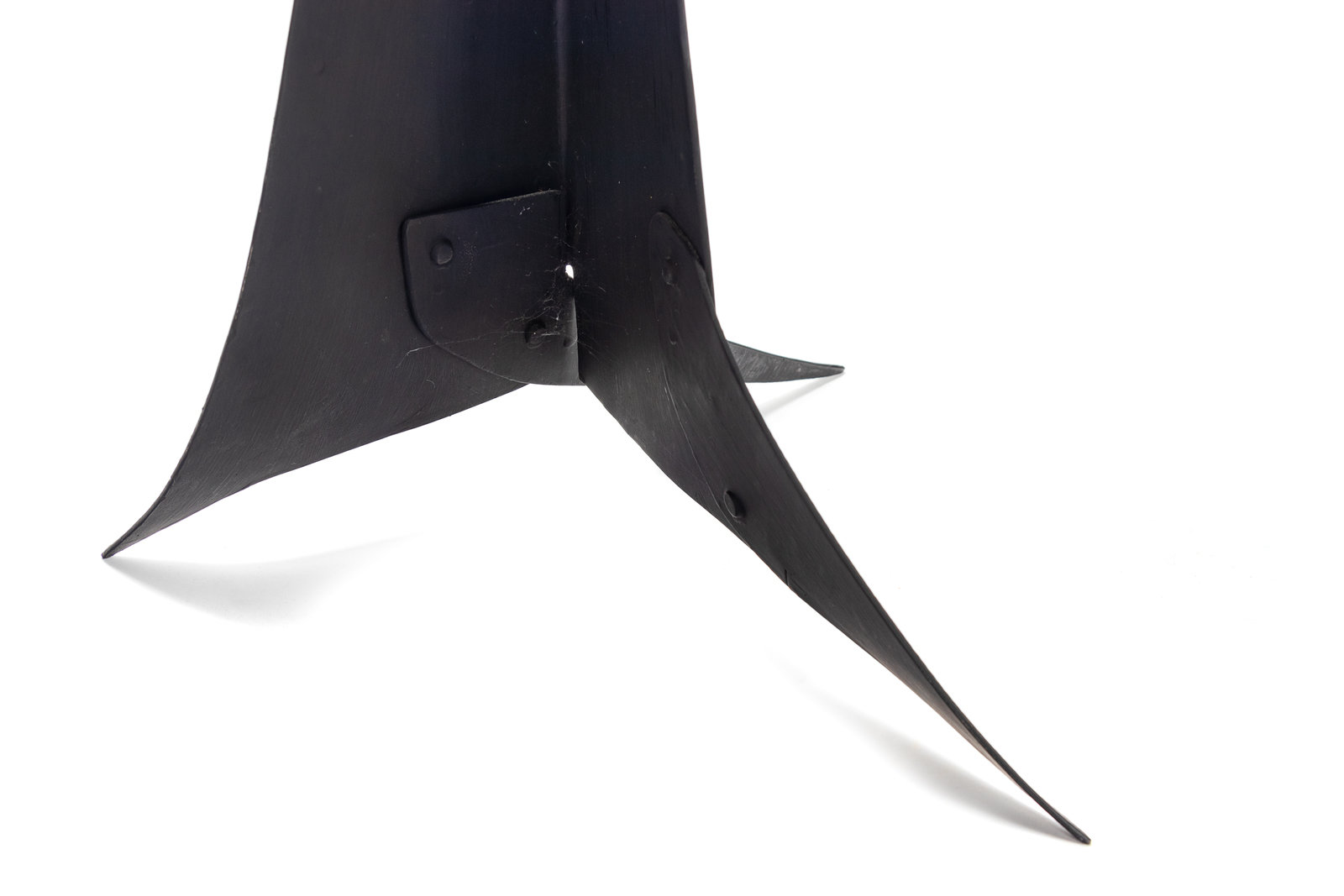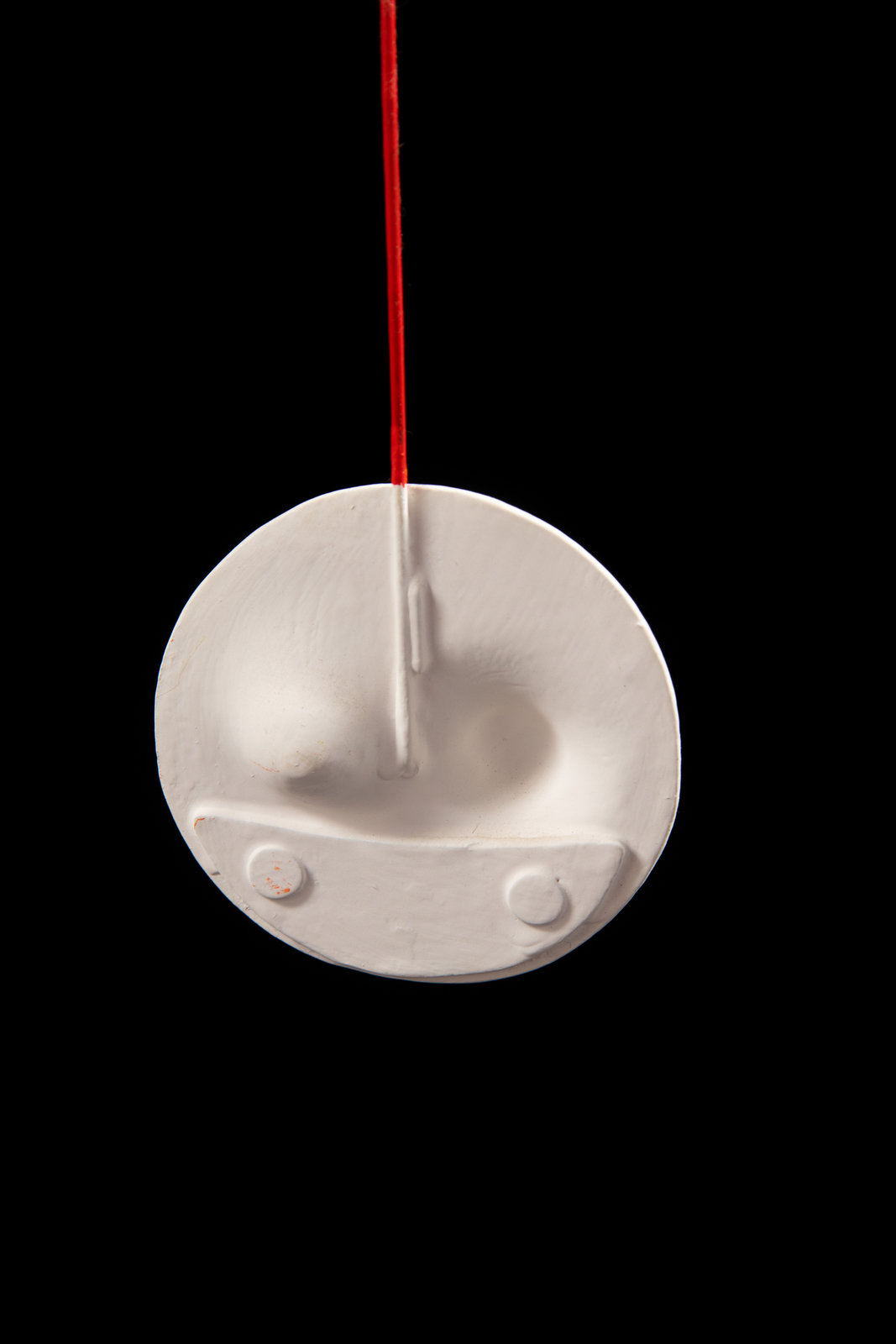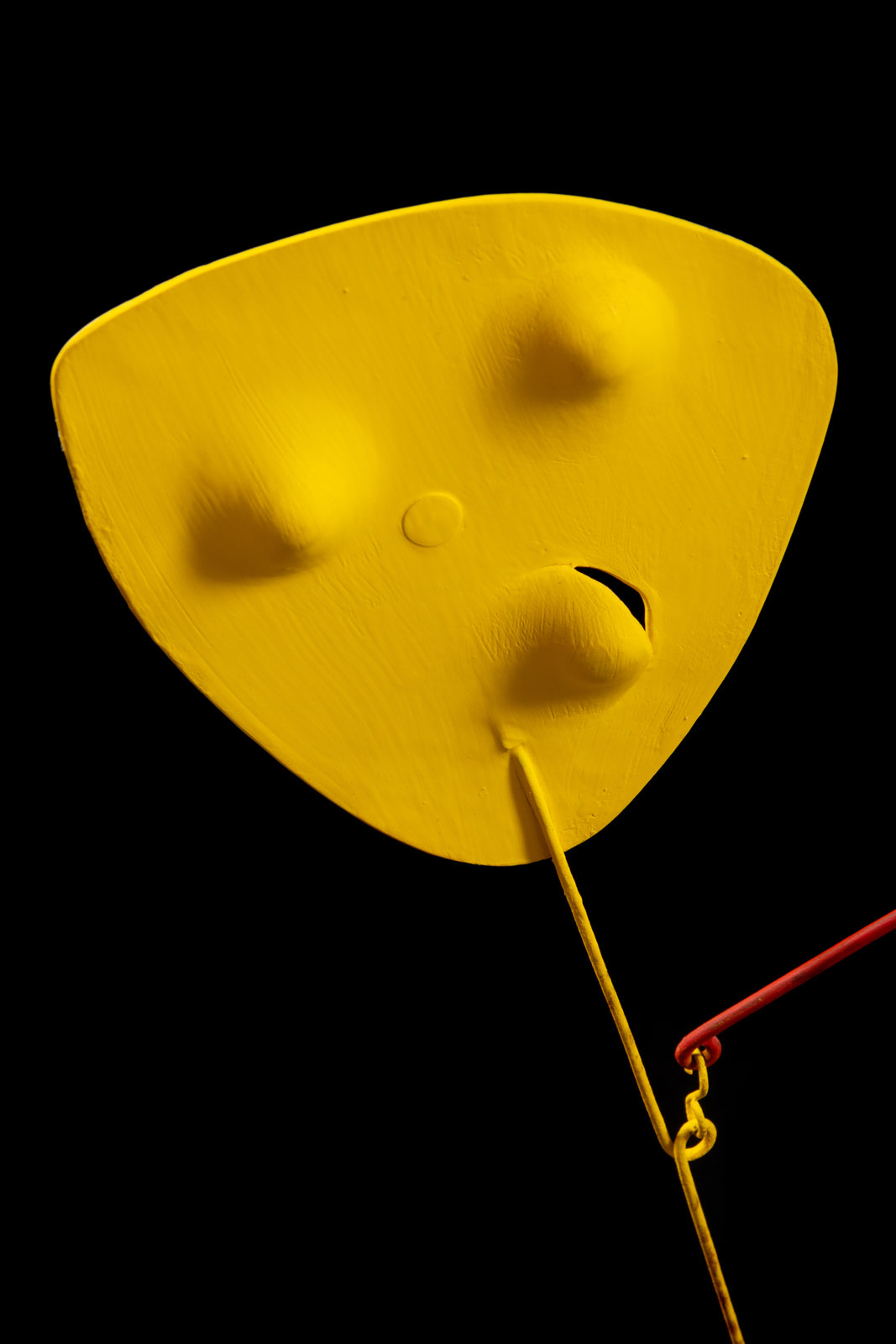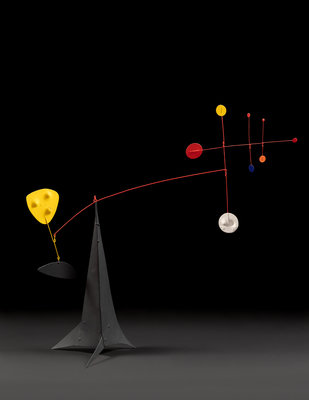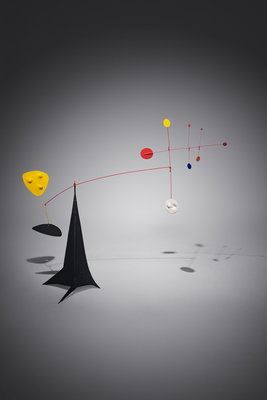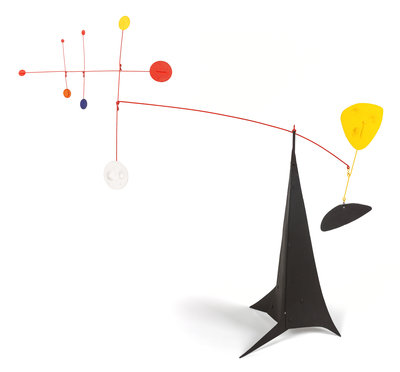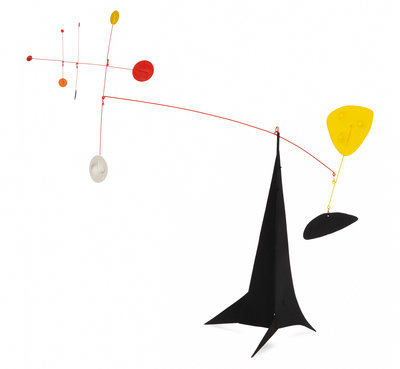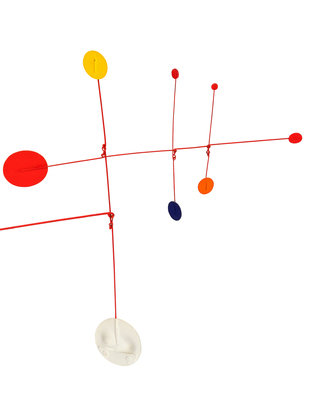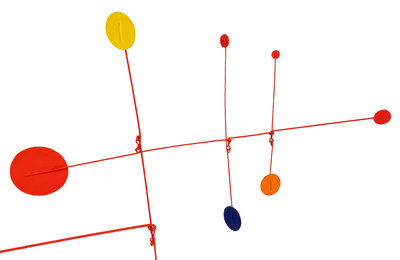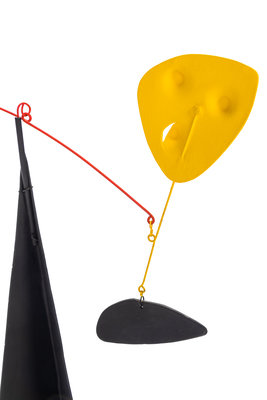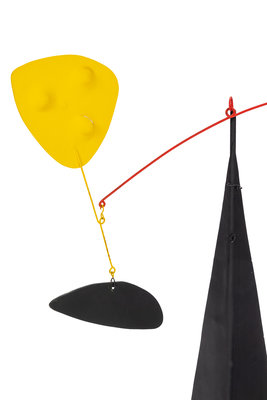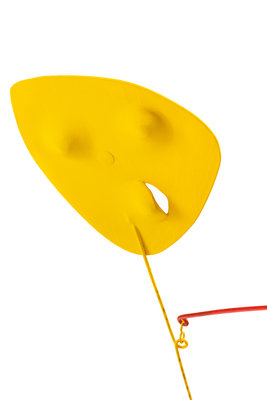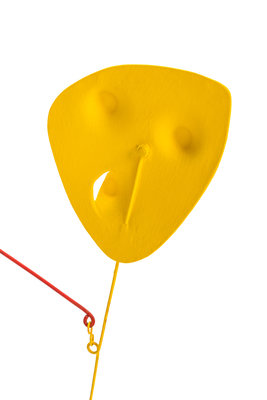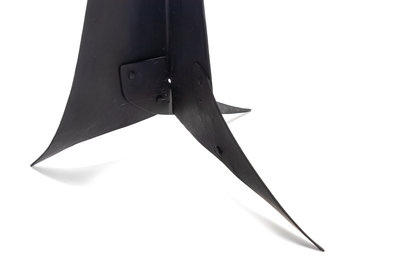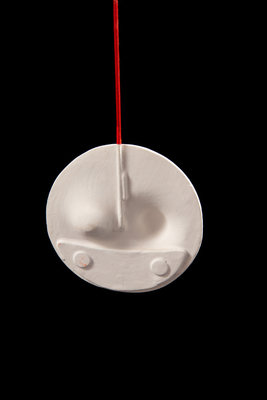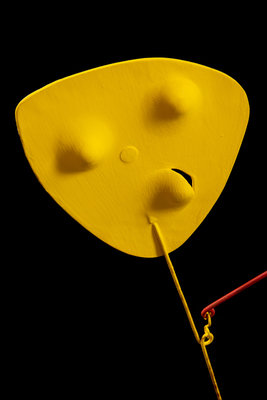Alexander Calder
(American, 1898-1976)
Triple Cross
, 1947
Sale 789 - Post War and Contemporary Art
Oct 1, 2020
10:00AM CT
Live / Chicago
Estimate
$600,000 -
$800,000
Sold for $1,872,500
Sold prices are inclusive of Buyer’s Premium
Lot Description
Alexander Calder
(American, 1898-1976)
Triple Cross
, 1947sheet metal, wire and paint
31 1/2 x 37 x 11 3/4 inches.
Property from the Estate of Joan Conway Crancer, St. Louis, Missouri
Provenance:
Acquired from the artist
Buchholz Gallery/Curt Valentin, New York
Virginia Pardridge Schoellkopf, New York
Sold: William Doyle Galleries, New York, April 21, 1982, Lot 61
Perls Galleries, New York
Acquired from the above in 1982
Exhibited:
New York, New York, Buchholz Gallery/Curt Valentin, Alexander Calder, December 9 - 27, 1947
Literature:
Matter, Herbert, Calder by Matter, Paris, 2014, p. 228, 229 illustrated
This work is registered in the archives of the Calder Foundation, New York, under application number A08166
Lot Essay:
"When everything goes right a mobile is a piece of poetry that dances with the joy of life and surprises" (Alexander Calder, quoted in Jean Lipman, Calder's Universe, London, 1977, p. 261).
Calder’s instantly recognizable kinetic sculptures revolutionized three-dimensional art in the early 20th century. In 1926, the young artist began a seven-year sojourn in Paris, where he absorbed European Modernism and was particularly influenced by the biomorphic forms, flat planes, and primary colors used by Piet Mondrian and Joan Miró. Calder used these motifs to invent his own artistic language, constructing sculptures brimming with dynamism and vibrancy. These innovative creations include static sculptures termed stabiles, kinetic sculptures called mobiles, and a hybrid, the standing mobile, with a kinetic sculpture attached to a non-moving base. All forms delight and awe with their irregular forms, bold colors, and flat planes, harmoniously balanced to move with the faintest breath of air.
Executed in 1947, Triple Cross exudes a whimsy that belies its sophisticated construction. One of Calder’s standing mobiles, it reflects the artist’s training as a mechanical engineer, as well as his use of humble materials such as sheet metal and wire struts. A long thin rod balances on top of the swooping foundation and forms the basis of a chain-linked system of smaller rods. Biomorphic, metal shapes are attached to the terminal points of the rods and carefully counterbalance each other. The black base, all angles and curves, is a solid contrapuntal to the colorful, quivering construction that rests on top. It is also worth noting that this sculpture does not bear the artist’s trademark CA monogram having been created during a younger more, idealistic period when Calder felt the work itself to be signature enough.
Created toward the later middle of his storied career, Petit poteau jaune (Little Yellow Post), 1963 demonstrates through balance and movement a maker who has mastered his craft. The standing mobile takes its title from the yellow “post” composed of a triangular base that then extends vertically upward. Perched on top of the post is a wire with a red, crescent moon-shaped element connected on one side and a decrescendo of wires and round forms on the other. The juxtaposition of the large red crescent moon with the smaller black and white round elements creates a visual tension that gives the sculpture a unique presence.
Calder's desire to create an art that would resonate with life led to a constant engagement with the pull of gravity, the circulation of air, and the play of chance. The stable bases of Triple Cross and Petit poteau jaune (Little Yellow Post) support an intricate system of cantilevers that give the individual elements extraordinary mobility. Together, they express a delicate vitality and strength, testaments to Calder’s ingenuity and creativity.
Condition Report
The physical condition of lots in our auctions can vary due to
age, normal wear and tear, previous damage, and
restoration/repair. All lots are sold "AS IS," in the condition
they are in at the time of the auction, and we and the seller make
no representation or warranty and assume no liability of any kind
as to a lot's condition. Any reference to condition in a catalogue
description or a condition report shall not amount to a full
accounting of condition. Condition reports prepared by Hindman
staff are provided as a convenience and may be requested from the
Department prior to bidding.
The absence of a posted condition report on the Hindman website or
in our catalogues should not be interpreted as commentary on an
item's condition. Prospective buyers are responsible for
inspecting a lot or sending their agent or conservator to inspect
the lot on their behalf, and for ensuring that they have
requested, received and understood any condition report provided
by Hindman.
Please email conditionreports@hindmanauctions.com for any additional information or questions you may have regarding this lot.
